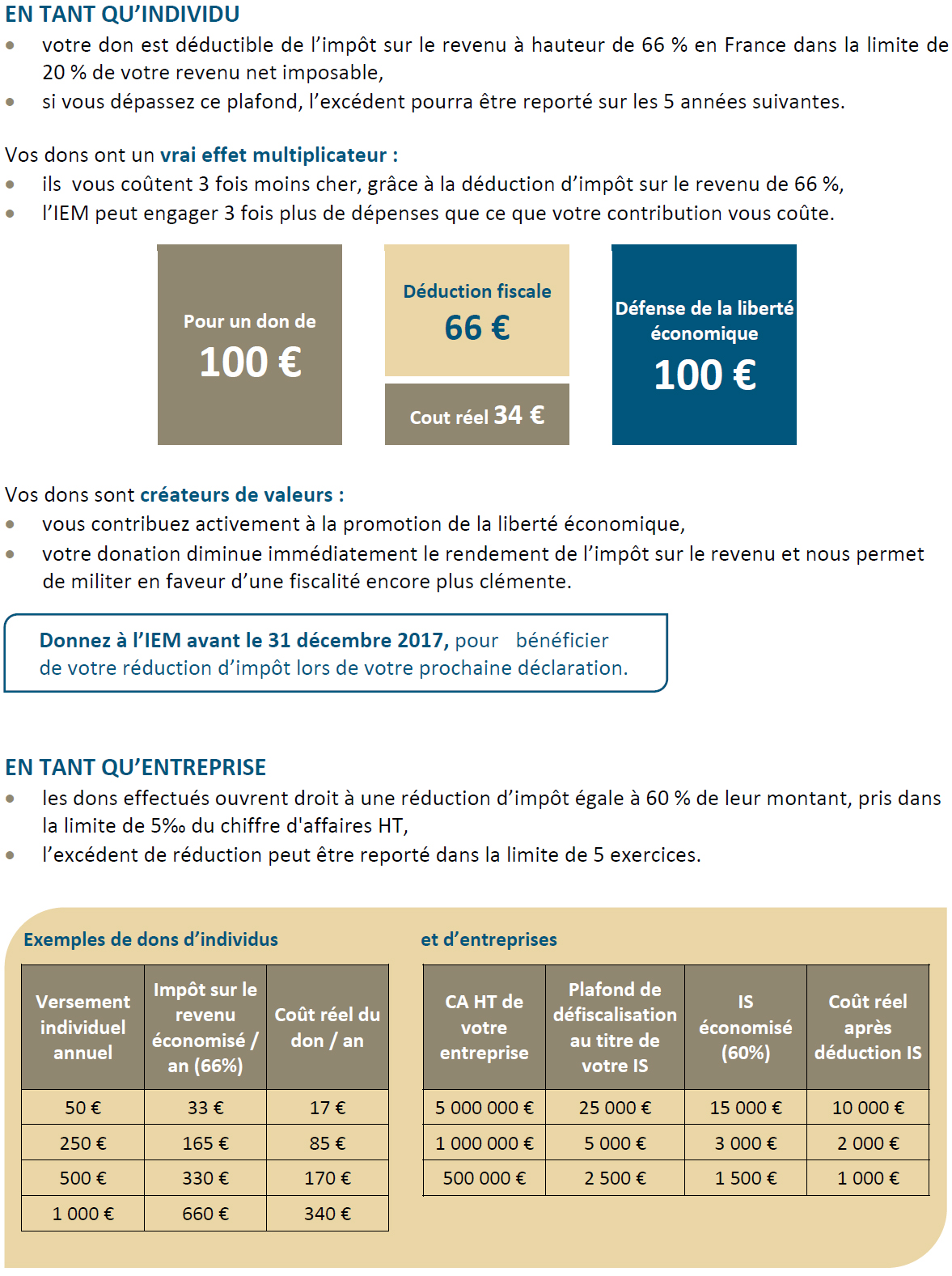Capitalising 2% of work income would offset the deficit in France’s pay-as-you-go pension system and would boost competitiveness, jobs and innovation
Paris, September 6, 2021 – CroissancePlus and the Institut économique Molinari are issuing a new study (in French only) titled “For a pension reform that meets French challenges: Competitiveness, jobs and innovation with capitalisation for all”.
This study shows that:
- the pension imbalance amounted to 2.8% of annual GDP in 2020, far more than the 0.6% deficit indicated by the Conseil d’orientation des retraites, a government advisory body;
- France suffers from a weak competitive position due to its very costly pension financing and has fallen 11 places in per-capita GDP in the last 25 years;
- collective capitalisation in the public service under ERAFP is a success;
- it can be duplicated in the private sector with a neutral effect on pay slips;
- improvement is needed in the way the pay-as-you-go pension system operates by bolstering its reserves and encouraging the combination of work and pension income; enhancement is needed in the PACTE law by making retirement savings plans more attractive.
The main recommendations are as follows:
- Establish collective capitalisation for all private sector employees based on the existing public service model with ERAFP.
- Secure and preserve distribution by guaranteeing the perpetuation of reserves, enhancing the combination of work and pension income and ending the forced merger of pay-as-you-go systems.
- Enhance the PACTE law by improving the tax system.
PAY-AS-YOU-GO PENSIONS ARE AT THE HEART OF THE CHALLENGES THAT FRANCE FACES
Pensions are a key problem for the public finances, a challenge that is significantly underestimated by the Conseil d’orientation des retraites:
- Pensions account for 61% of the increase in public spending since 1959. They amounted to 14.7% of GDP in 2020 compared to 5.1% of GDP in 1959.
- The situation is especially acute in the public sector, where pensions are financed by the budget and by deficits. The employer contribution is 4.5 times higher for civil servants than in the private sector and 1.9 times higher than for employees of local authorities. This amounts to a balancing subsidy.
- The true pension imbalance was 2.8% of GDP in 2020, far more than the 0.6% deficit shown by the Conseil d’orientation des retraites in its June report, representative of private sector distribution.
Funding pensions through compulsory levies increases labour costs and weakens competitiveness:
- Whereas France accounted for 16% of production in the EU 28 in 1995, it accounted for only 14% in 2019.
- The situation is even worse for operating surpluses. France accounted for 13% of operating surpluses in the EU 28 in 1995, but only 11% in 2019. The profitability of economic activities is falling. Over the last 25 years, French operating surpluses have been 23% below the European Union average.
- As a result, per-capital GDP is growing less quickly than elsewhere, falling in the last quarter-century from 13th place worldwide to 24th
- Pensions also play a role in the rise in unemployment, which has grown sixfold since In 2019, even before the Covid-19 crisis, France had excess unemployment of 500,000 to 1.5 million people, depending on whether the comparison is made with the EU average or with Germany. In addition, more than 360,000 residents were working abroad, and 2.9 million people had emigrated, a figure similar to that of the United States, with five times the population.
€60 billion a year in purchasing power is lost due to the underdevelopment of capitalisation:
- The difference in returns between distribution and capitalisation is almost 1:3 in favour of capitalisation. With the same level of contributions, employees would create three times more pension benefits if they could capitalise collectively rather than paying into the pay-as-you-go system.
- Overall, France is way behind in collective capitalisation, creating a huge shortfall for society. Each year,6 points of GDP, or €60 billion, go missing compared to the OECD average. This shortfall is equal to 19% of the pensions distributed, or €3,750 per pensioner each year.
- Even so, France does have some nuggets of collective capitalisation, in the public sector (ERAFP, Bank of France, Senate, etc.) and in some self-employed professions (such as pharmacists). These funds generate about €2 billion in dividends and capital gains without having to rely on compulsory levies. They should be encouraged and duplicated rather than shut down as proposed in the Delevoye reform.
ESTABLISH COLLECTIVE CAPITALISATION FOR PRIVATE SECTOR EMPLOYEES MODELLED ON THE PUBLIC SECTOR APPROACH
ERAFP, the French public pension fund, has earned €15 billion for its beneficiaries
- The Etablissement de retraite additionnelle de la fonction publique (ERAFP), established by the Fillon law on pensions (2003), has had a 5.4% internal rate of return since it was set up. It has earned about €15 billion from its investments since 2006.
- This is a pension fund sustained by contributions from 4.5 million public servants and their 43,000 public employers (central government, local authorities, hospitals, etc.).
- It collects pension contributions from civil servants (€2 billion in 2020) that it invests in financial markets to make it grow (to €5 billion at the end of 2020).
- It is governed jointly, with representatives from the contributors (CGT, CFDT, FO, UNSA, FSU, Solidaires, FA-FP, CFE-CGC).
A private pension fund modelled on ERAFP would deliver 0.8% of GDP annually at a normal pace
- The study suggests creating a private sector employees’ supplementary pension institution for the benefit of all private sector employees. It would be sustained by payroll deductions and would operate on a funded basis according to the same rules as ERAFP in the public sector.
- Assuming a contribution of 2% of private sector payroll (or 0.5% of GDP), this institution would hold 32% of GDP at a normal pace. After 60 years, it would return 0.8% of GDP each year, funding pensions without impairing competitiveness or purchasing power. This amount is equal to the current deficit in pay-as-you-go pensions, according to the Conseil d’orientation des retraites (0.8% of GDP reduced to 0.6% of GDP following the transfer of the pension reserve fund).
- Establishing collective capitalisation for private sector employees would have a neutral effect on pay slips, with no increased cost for employers and no reduction in purchasing power for employees. Pay slip deductions that do not generate social security rights would be reduced proportionately in tandem with a significant decrease in production taxes.
- Assuming a contribution of 4% of the private sector payroll, together with a more ambitious decrease in production taxes, this institution would hold the equivalent of 62% of annual GDP at a normal pace, bringing in 1.6% of GDP per year. It would be possible to lower pay-as-you-go contribution rates to preserve the purchasing power of the workforce as well as competitiveness.
QUOTES
Thibaut Bechetoille, President of CroissancePlus: “Reforming our pension system is utterly essential for our economy. Many issues are at stake: the system’s sustainability and pensioners’ living standards, as well as the competitiveness and financing of our companies. We believe capitalisation must be developed to supplement the current system, to everyone’s benefit. We need to get away from ideological posturing and look at the facts. An extensive reform of our pension system is one of the top priorities for guaranteeing the endurance and development of our companies.”
Nicolas Marques, Managing Director of the Institut économique Molinari: “We need to bolster our public and private pension funds as urged by Jean Jaurès 110 years ago. Only the addition of a substantial dose of retirement savings, thereby strengthening public and private pension funds, is likely to change the situation. By enabling pensions to be partly financed by dividends and capital gains, it would reduce the dependence on charges and taxes that penalise growth, jobs, wages and pensions.”
COMPLEMENTS
The study “For a pension reform that meets French challenges: Competitiveness, jobs and innovation with capitalisation for all” (88 pages, in French) is available on the websites of CroissancePlus and the Institut économique Molinari.
A five-page summary (in French) is available on the websites of CroissancePlus and the Institut économique Molinari.
ABOUT CROISSANCE PLUS AND THE INSTITUT ECONOMIQUE MOLINARI
- France’s first network of growth entrepreneurs, created in 1997, CroissancePlus is regarded as a force for proposals and influence with public authorities and opinion leaders to promote business growth and job creation in France.
- The Institut économique Molinari is an independent research and education organisation. It seeks to stimulate the economic approach in public policy analysis, offering innovative alternative solutions that favour prosperity for all individuals.
FOR INFORMATION OR INTERVIEWS, CONTACT
- Thibaut Bechetoille, President of CroissancePlus
bechetoille@croissanceplus.com, +33 6 89 98 99 66 - Nicolas Marques, Managing Director of the Institut économique Molinari
nicolas@institutmolinari.org, +33 6 64 94 80 61




